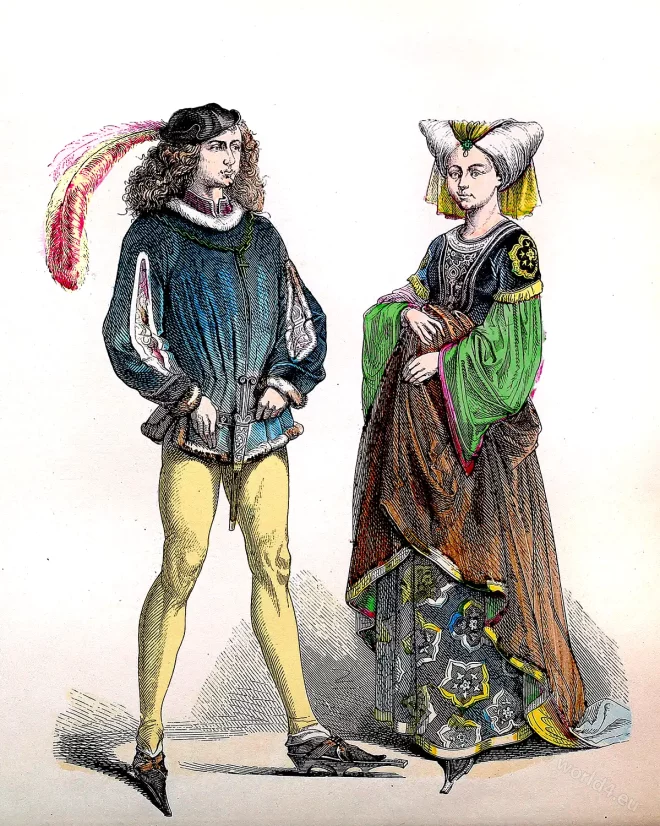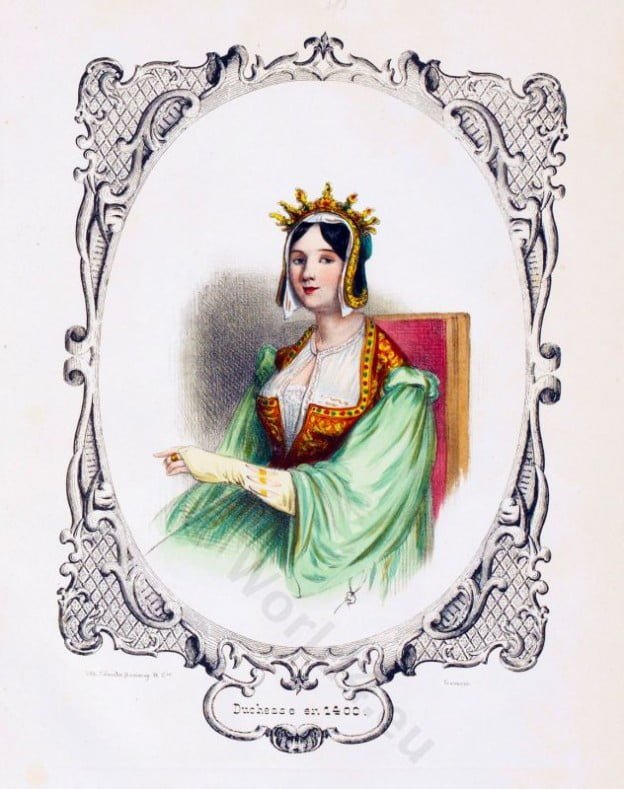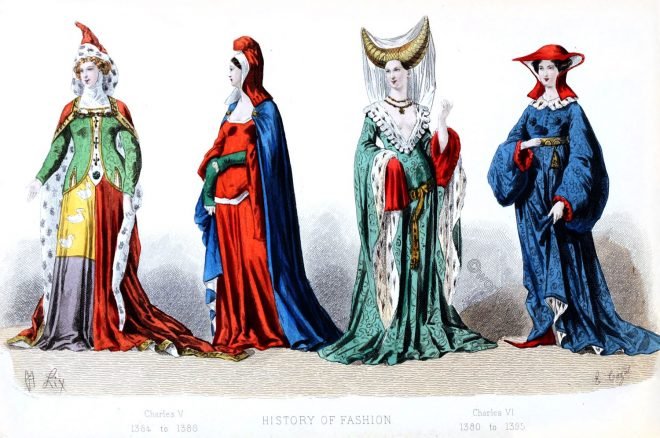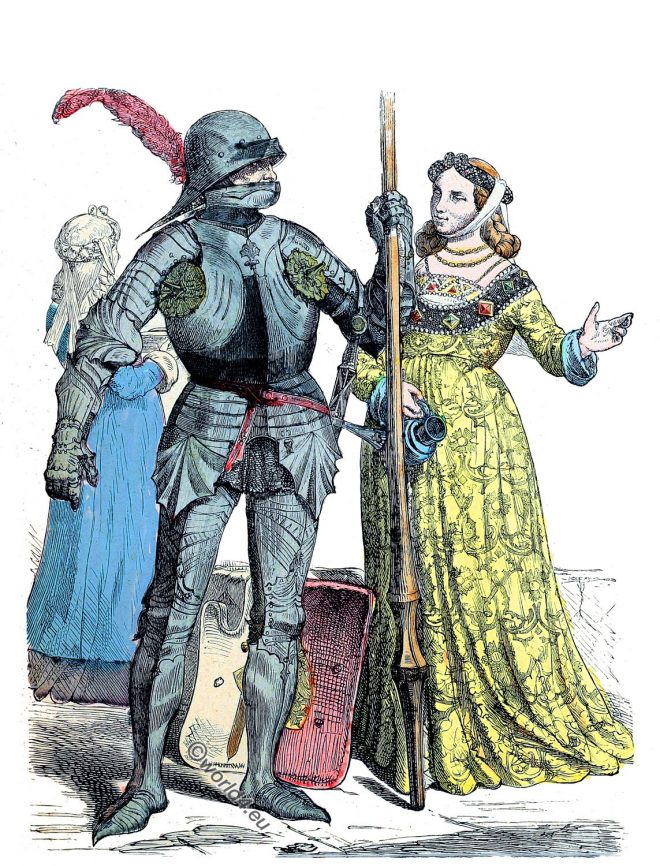The fifteenth century was an exaggeration of the modes of the fourteenth.
Tag: Burgundian fashion period
Burgundian fashion period between 1350-1500. In the 15th Century the Duchy of Burgundy was the leader in the European fashion. Characteristic of the Burgundian women’s fashion at the end of the Middle Ages, as part of the epoch of Gothic, was the very form-fitting clothes, with long trailing skirt and tight laced bodice. The waist ended under the deep cutout, which was bordered by a belt. The head covering for women is an acute or obtuse cone, from which a long veil called Flinder hangs down. Under the term hennin, evolved in a short time a number of different forms and variations. The medieval toed shoes were long and the clothes were playful and detailed. Men decorated their clothes with many small clamps, sleeves were decorated with small piece of cloth, called Zaddeln. Known from the Middle Ages Mi-parti, took on a new bloom. In this case the clothes got two different colors. Hairline and eyebrows were plucked to achieve a high forehead. The white, flawless skin was a sign of beauty.
The Duchesse. French nobility. 14th c..
The woman wears a tight-fitting bodice, furthermore the pleated Chiopa with wide cap sleeves.
Reigns of John II and of Charles V. 1350 to 1380. Middle Ages.
Reigns of John II and of Charles V. 1350 to 1380. The fourteenth and fifteenth centuries – Low dresses – Garnaches and garde-corps. Precious stones. Splendid furniture.
German Knight in Armor, 15th century.
Knight in armor and noble wife in Germany 1450.
Middle Ages fashion history in Germany.
Middle Ages fashion history in Germany. Dress of the citizen, peasants and nobility.





